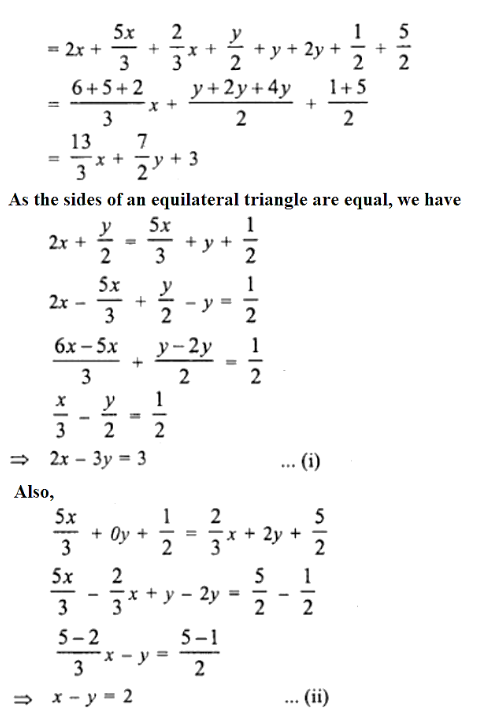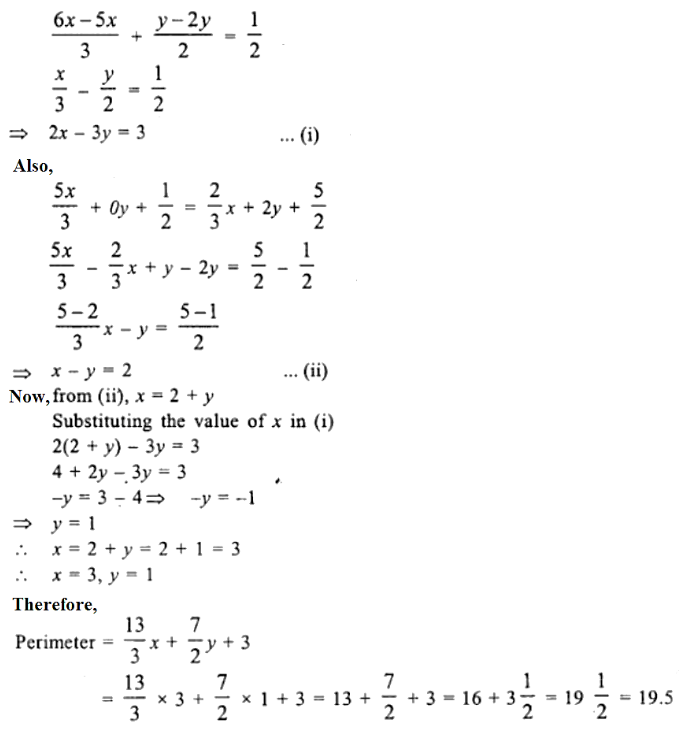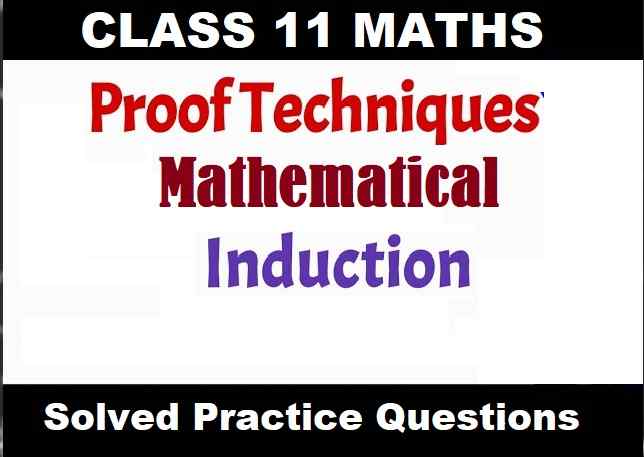ML Aggarwal Problems on Simultaneous Linear Equations Chapter Test Class 9 ICSE Maths Solutions. Step by step solutions of Ch-Test Word Problems on Simultaneous Linear Equations as council prescribe guideline. Visit official website CISCE for detail information about ICSE Board Class-9.
ML Aggarwal Problems on Simultaneous Linear Equations Chapter Test Class 9 ICSE Maths Solutions Ch-6
| Board | ICSE |
| Subject | Maths |
| Class | 9th |
| Chapter-6 | Problems on Simultaneous Linear Equations |
| Topics | Solution of Ch-Test Questions |
| Academic Session | 2024-2025 |
Solution of Ch-Test Problems on Simultaneous Linear Equations
ML Aggarwal Class 9 ICSE Maths Solutions
Question 1. A 700 g dry fruit pack costs 216 rs.. It contains some almonds and the rest cashew kernel. If almonds cost Rs. 288 ‘per kg and cashew kernel cost Rs. 336 per kg, what are the quantities of the two dry fruits separately?
Answer : Given,
Cost of 700 gm of fruit = Rs 216
Cost of almonds = Rs 288 per kg
And cost of cashew = Rs 336 per kg
Now, let the weight of almond = x gm and
The weight of cashew = (700 – x) gm
Then according to the conditions given in the problem, we have

288x + 235200 – 336x = 216000
288x – 336x = 216000 – 235200
x = -19200/-48 = 400
Therefore, the weight of almond = 400 gm and the weight of cashew = (700 – 400) gm = 300 gm
Question 2. Drawing pencils cost 80 paise each and coloured pencils cost Rs. 1.10 each. If altogether two dozen pencils cost Rs. 21.60, how many coloured pencils are there?
Answer : Let the number of drawing pencils be x
And let the number of coloured pencils be y
Then, according to the given conditions, we have
x + y = 2 x 12 [1 dozen = 12]
x + y = 24 … (i)
And,
x × 80/100 + y x 1.10 = 21.60 [As 80 paise = Rs 80/100]
80x/100 + 1.10y = 21.60
(80x + 110y)/100 = 21.60
80x + 110y = 2160
8x + 11y = 216 … (ii)
Performing 8 x (i) – (ii), we have
8x + 8y = 192
8x + 11y = 216
(-)–(-)—-(-)—–
-3y = -24
y = -24/-3
y = 8
On substituting the value of y in equation (i), we get
x + 8 = 24
x = 24 – 8
x = 16
Therefore, the number of coloured pencils is y = 8
Question 3. Shikha works in a factory. In one week, she earned Rs. 390 for working 47 hours, of which 7 hours were overtime. The next week she earned Rs. 416 for working 50 hours, of which 8 hours were overtime. What is Shikha’s hourly earning rate?
Answer : Let’s assume the earning’s of Shikha be Rs x per regular hour and Rs y per hour during overtime.
Then according to the conditions given in the problem, we have
40x + 7y = 390 … (i)
And,
42x + 8y = 416 … (ii)
Performing 8 x (i) – 7 x (ii), we get
320x + 56y = 3120
294x + 56y = 2912
(-)—-(-)——(-)—–
26x = 208
x = 208/26
On substituting the value of x in equation (i), we have
40 x 8 + 7y = 390
320 + 7y = 390
7y = 390 – 320
7y = 70
y = 70/7 = 10
Therefore, shikha’s earning is Rs 8 per regular hour and Rs 10 per hour over time.
Question 4. The sum of the digits of a two digit number is 7. If the digits are reversed, the new number increased by 3 equals 4 times the original number. Find the number.
Answer : Let’s take the digit at tens place = x
And let the digit at unit place = y
So, the number = 10 × x + 1 × y = 10x + y
Reversing the number = 10 × y + 1 × x = 10y + x
Now, according to the conditions given in the problem, we have
x + y = 7… (i)
And,
10y + x = 4(10x + y) – 3
10y + x = 40x + 4y – 3
40x – x + 4y – 10y = 3
39x – 6y = 3
13x – 2y = 1 … (ii)
Performing 2 x (i) + (ii) to solve, we have
2x +2 y = 14
13x – 2y = 1
——————
15x = 15
x = 15/15
x = 1
On substituting the value of x in equation (i), we have
1 + y = 7
y = 7 – 1
y = 6
Therefore, the number is 10x + y = 10(1) + 6 = 16.
Question 5. Three years hence a man’s age will be three times his son’s age and 7 years ago he was seven times as old as his son. How old are they now?
Answer : Let the present age of man be x years
And his son’s present age be y years
So, three years hence the man’s age will be (x + 3) years
And his son’s age 3 years hence will be (y + 3) years
Now, 7 years ago the age of the man will be (x – 7) years
And the age of his son 7 years ago will be (y – 7) years
Then according to first given condition, we have
(x + 3) = 3 (y + 3)
x + 3 = 3y + 9
x – 3y = 9 – 3
x – 3y = 6 … (i)
Next, according to second given condition, we have
(x – 7) = 7(y – 7)
x – 7 = 7y – 49
x – 7y = -49 + 7
x – 7y = -42 … (ii)
Subtracting (i) from (ii), we get
x – 7y = -42
x – 3y = 6
(-)—(+)—(-)—-
-4y = -48
y = 48/4
y = 12
On substituting the value of x in equation (i), we have
x – 3(12) = 6
x – 36 = 6
x = 6 + 36
x = 42
Therefore, the man’s age is 42 years and his son’s age is 12 years.
Question 6. Rectangles are drawn on line segments of fixed lengths. When the breadths are 6 m and 5 m respectively the sum of the areas of the rectangles is 83 m². But if the breadths are 5 m and 4 m respectively the sum of the areas is 68 m². Find the sum of the areas of the squares drawn on the line segments.
Answer : Let the length of first fixed line segment be x
And the length of second line segment be y
In first case, when the breadths are 6 m and 5m the sum of the areas = 83 m2
⇒ 6x + 5y = 83 … (i)
And, in the second case when breadths are 5 m and 4 m the sum of areas = 68 m2
⇒ 5x + 4y = 68 … (ii)
Performing 4 x (i) – 5 x (ii) to solve, we get
24x + 20y = 332
25x + 20y = 340
(-)—-(-)——(-)—-
-x = -8
x = 8
On substituting the value of x in equation (i), we get
6(8) + 5y = 83
48 + 5y = 83
5y = 83 – 48
5y = 35
y = 35/7
y = 5
Therefore, the first line segment’s length is 8 m and the second line segment’s length is 7 m.
And the sum of areas of the squares on these two line segments = 82 + 72 = 64 + 49 = 113 m2.
Question 7. If the length and the breadth of a room are increased by 1 metre each, the area is increased by 21 square metres. If the length is decreased by 1 metre and the breadth is increased by 2 metres, the area is increased by 14 square metres. Find the perimeter of the room.
Answer : Let’s consider the length of room as x metre
And the breadth of the room = y metre
So, the area of the room = length x breadth = xy sq. metre
Now, according to the first condition given in the problem, we have
xy = (x + 1) (y + 1) + 1 – 21
xy = xy + x + y + 1 – 21
x + y = 20 … (i)
And, according to the second condition, we have
xy = (x – 1) (y + 2) – 14
xy = xy – y + 2x – 2 – 14
2x – y = 16 … (ii)
Adding (i) and (ii), we get
x + y = 20
2x – y = 16
—————–
3x = 36
x = 36/3
x = 12
On substituting the value of x in equation (i), we get
12 + y = 20
y = 20 – 12
y = 8
Thus, the length of the room = 12 m and the breadth of the room = 8 m
Therefore, the perimeter of the room = 2 x (length + breadth)
= 2 x (12 + 8) = 2 x 20
= 40 m
Question 8. The lengths (in metres) of the sides of a triangle are 2x + y/2, 5x/3 + y + ½ and 2x/3 + 2y + 5/2. If the triangle is equilateral, find the its perimeter.
Answer : Given, the length of the sides of an equilateral triangle are 2x + y/2, 5x/3 + y + ½ and 2x/3 + 2y + 5/2.
Perimeter = (2x + y/2) + (5x/3 + y + ½) + (2x/3 + 2y + 5/2)



Question 9. On Diwali eve, two candles, one of which is 3 cm longer than the other are lighted. The longer one is lighted at 530 p.m. and the shorter at 7 p.m. At 930 p.m. they both are of the same length. The longer one burns out at 1130 p.m. and the shorter one at 11 p.m. How long was each candle originally?
Answer : Let’s assume that the longer candle shorten at the rate of x cm/hr in burning case and the smaller candle shorter at the rate of y cm/hr.
Given, in burning case the longer candle burns out completely in 6 hours and that the smaller candle in 4 hours,
So, their lengths are 6x cm and 4y cm respectively.
Then, according to the first condition given in the problem, we have
6x = 4y + 3
6x – 4y = 3 … (i)
At 9:30 p.m the length of longer candle = (6x – 4x) cm = 2x cm
At 9:30 p.m the length of smaller candle = (4y – 5y/2) cm = (8y – 5y)/2 cm = 3y/2 cm
Now, according to the second condition given in the problem, we have
2x = 3y/2 [Since both the candles have same length at 9:30 p.m.]
4x = 3y
4x – 3y = 0 … (ii)
Performing 3 x (i) – 4 x (ii), we have
18x – 12y = 9
16x – 12y = 0
(-)–(+)—–(-)—
2x = 9
x = 9/2 = 4.5 cm/ hr
On substituting the value of x in equation (2), we get
4(4.5) – 3y = 0
18 – 3y = 0
3y = 18
y = 18/3
y = 6 cm/ hr
Therefore,
Length of longer candle = 6x cm = 6 x 4.5 cm = 27 cm
Length of smaller candle = 4y cm = 4 x 6 cm = 24 cm
— : End of ML Aggarwal Problems on Simultaneous Linear Equations Chapter Test Class 9 ICSE Maths Solutions :–
Return to :- ML Aggarawal Maths Solutions for ICSE Class-9
Thanks
Please Share with Your Friends


